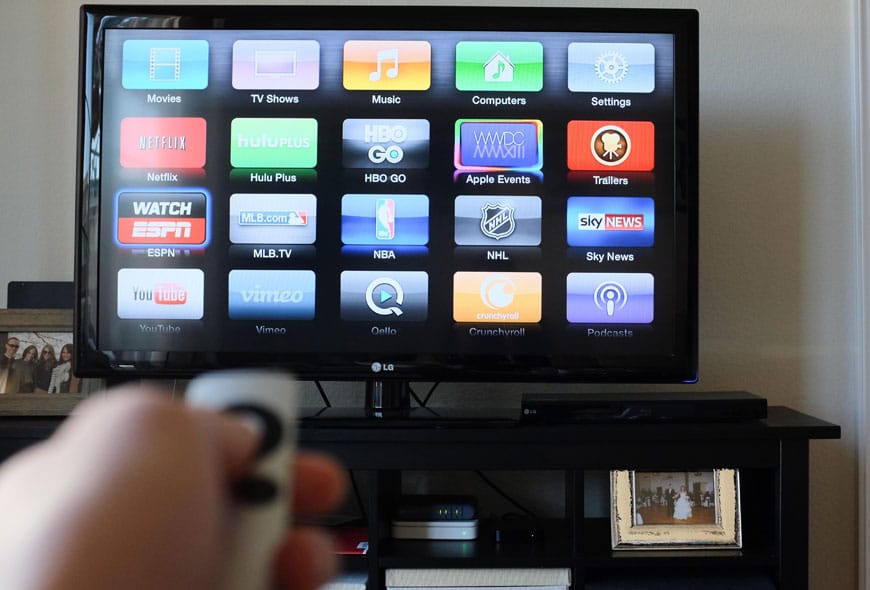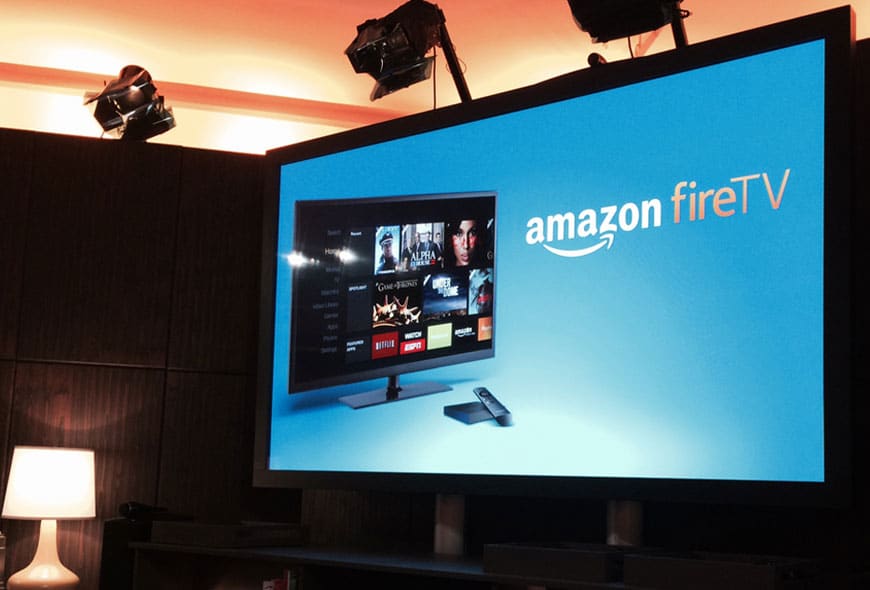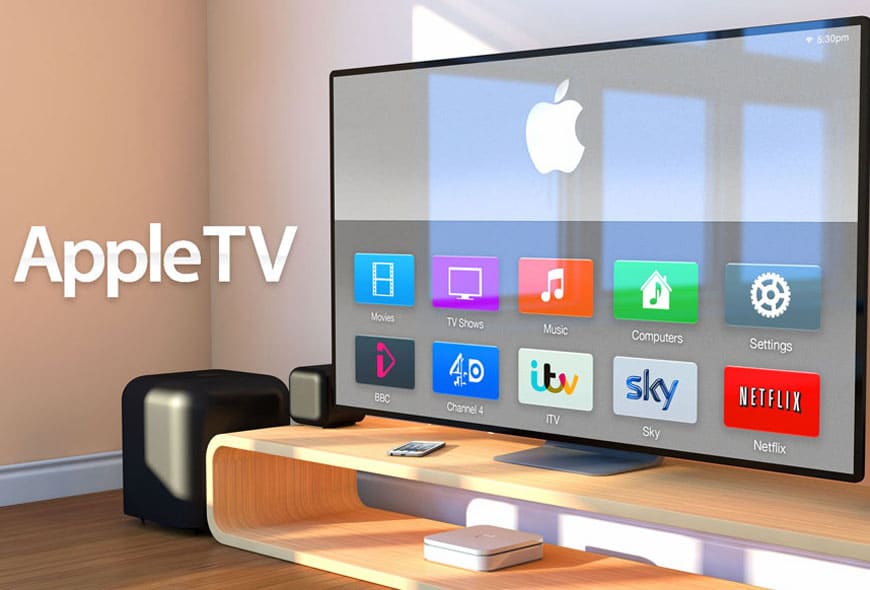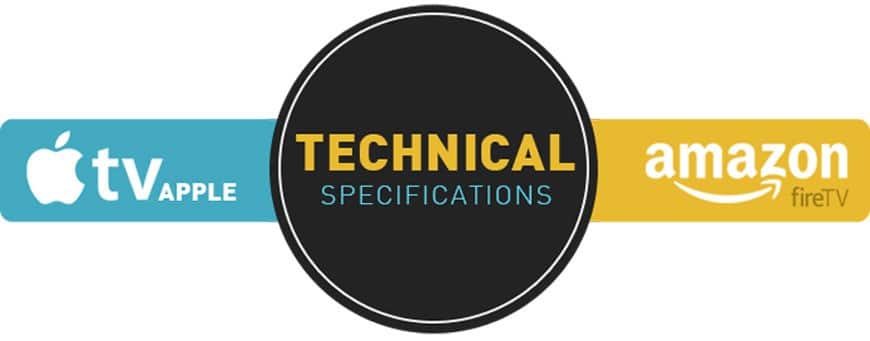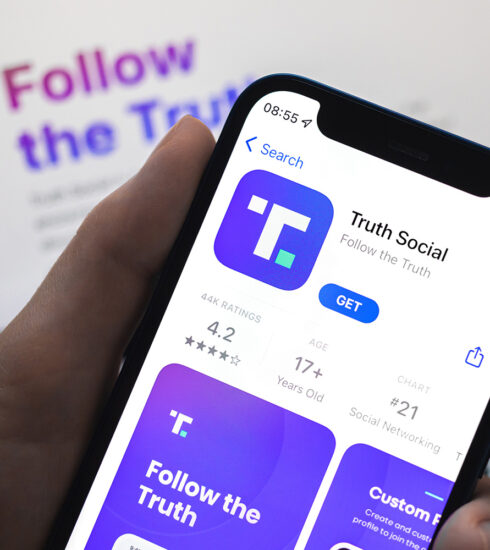How Amazon Fire Compares to Apple TV
Batman versus Superman, Nike versus Reebok, Boston versus New York, Pepsi versus Coke…each brand name marches the battlefield of a subjective water-cooler war waged in the eyes of devoted fans worldwide. Brand battles rock a hot-topic status on the Internet and the resulting feuds supply the groundwork for “Teams” favoring one product, person or team over the other. Yes, the back and forth between bona fide brand groupies is entertaining. And cute. But, despite the compelling arguments served up by either side, is one product really ever better than the other?
Well, now that Amazon’s Fire TV has been released, you can add Apple TV versus Amazon Fire to the aforementioned brand battle lineup. With $1 billion in sales last year, Apple TV has reigned supreme in the video streaming market over competing products Roku and Google Chromecast. However, with this year’s unveiling of Amazon Fire TV, the capitalistic crown sits a little less tight on the head of stream market juggernaut Apple TV. A bold statement, to say the least.
So, what about Fire TV solidifies its status as a legitimate Apple TV competitor rather than just another Apple TV victim?
The Specs
For those unfamiliar with the products, Amazon Fire and Apple TV are streaming devices that connect your television to online entertainment networks, similar to rivals Roku and Google Chromecast. Using Amazon Fire or Apple TV, owners can stream movies, TV shows, video-games, and music directly to their television from the comfort of their living room couch. Convenient, quick and easy, Amazon Fire and Apple TV are basically a consumer’s personal compact command center.
Apple TV packs a single-core processor and provides a 1080p HD image. It holds 512 megabytes of memory and is equipped with Dolby Digital Sound. Competitor Amazon Fire has a leg-up on Apple and packs a quad-core processor (three times the processing power of Apple TV), 2 gigabytes of memory (over twice that of Apple TV), 1080p HD video and, last but not least, Dolby Digital Plus Surround Sound (supports a higher bit rate than Apple TV and ultimately produces slightly stronger audio).
Additionally, Amazon Fire is equipped with dual-band Wi-Fi Ethernet as opposed to Apple’s single-band Wi-Fi Ethernet, enabling Fire to produce a stronger signal and a wider range for that signal. While different routers meet different needs of different consumers, the Fire device is positioned as a family product. Therefore, the dual-band Wi-Fi feature’s expansive signal range makes it more convenient for larger, family-sized homes.
The Channels
Netflix, Vevo, The Huffington Post, Pandora, HBO, Showtime…the channels give us our news, movies, television shows, and music. They’re the icing on the cake.
The difference in channel number between Amazon Fire and Apple TV isn’t significant. Fire provides access to 24-plus channels while Apple TV allows users to access 30-plus channels. Most channels on either device also require a paid subscription in order to view them.
While the channel count is relatively similar between Fire and Apple TV, each device provides access to at least one channel that the other device lacks. Apple TV gives users access to HBO Go, a channel that streams viewers’ favorite HBO television shows, movies, sports and documentaries. Likewise, Amazon Fire gives access to Showtime Anytime, which allows viewers to watch their favorite original Showtime Series, popular movies and sports, wherever and whenever they want. So, HBO Go or Showtime Anytime? The Sopranos or Dexter? Boardwalk Empire or Ray Donovan? It’s really a matter of personal preference.
As a bonus, similar to Netflix, Amazon Fire gives users unlimited viewing of over 200,000 movie titles and TV shows via Amazon Instant streaming; however, Amazon Instant requires an Amazon Prime membership amounting to a $99.00 annual fee, which runs at about the same rate as an annual Netflix subscription. Despite the massive range of titles available for viewing, is the annual fee worth the small dent it’ll put on your credit card?
Unique Features
Given that Amazon Fire was last out of the gate, it inherently possessed the advantage of time and anticipation over its competitors. Apple TV features, such as the ability to link with the user iPad and the iPhone, were unique at the time of its release. However, Amazon was able to mimic the linking feature with their Kindle Fire and they even created a couple of their own fresh gimmicks.
The first feature unique to Amazon Fire is the ASAP (Advanced Streaming and Prediction) system. ASAP enables Fire to learn your favorite movies and TV shows and thus pre-buffer these programs in order to reduce wait times when you select a video to stream. Think of it as a butler who’s just ironed your clothes the moment before you decide to put them on. They’re already fresh, warm and ready. Therefore, with ASAP, Amazon Fire never has to get ready…it already is ready.
Fire’s second unique feature is its Voice Activated Search engine. Users can simply say a title, actor, director or genre into the Fire remote’s built-in microphone and the search engine instantly retrieves the results of the spoken keyword. The voice-activated search is a feature native to game console Xbox One as well.
Ultimately, Apple TV lacks several aspects of the distinct software currently offered by Amazon Fire and its quality suffers a significant hit because of it. But, don’t be surprised to see the aforementioned features (and several other fresh ones) added to the Apple TV device when the next upgrade is released. History’s made it clear that Apple doesn’t settle for second place.
In Summation…
Yes, the brand battle between Amazon Fire and Apple TV is a subjective war. Your personal victor depends entirely on individual preferences as to what constitutes the ideal streaming entertainment system. As for our personal victor and our purchase suggestion to consumers, well, we leave you with the chart below to help you make the best buy . . .
Pros – Amazon Fire
• Fire operates on a Quad-Core Processor, 2 GB Memory, Dolby Digital Plus Sound, and Dual-Band Wi-Fi Ethernet, providing performance superior to Apple TV’s Single-Core Processor, 512 MB of Memory, Dolby Digital Sound and Single-Band Ethernet.
• ASAP (Advanced Streaming and Prediction) enables Fire to pre-cache a user’s favorite movies and television shows, which reduces buffer wait time when streaming videos. No such feature exists on Apple TV…yet.
• Amazon Fire packs a Voice-Activated Search Engine. Apple TV has no such feature…yet.
• Amazon Fire sells at a discounted price of $84.00 versus $99.00 for Apple TV (although Apple TV is now offering a $25.00 iTunes gift card and free shipping with purchase of Apple TV).
Cons – Amazon Fire
• Access to Amazon Instant library of movies and television shows requires Amazon Prime membership at a $99.00 annual fee.




